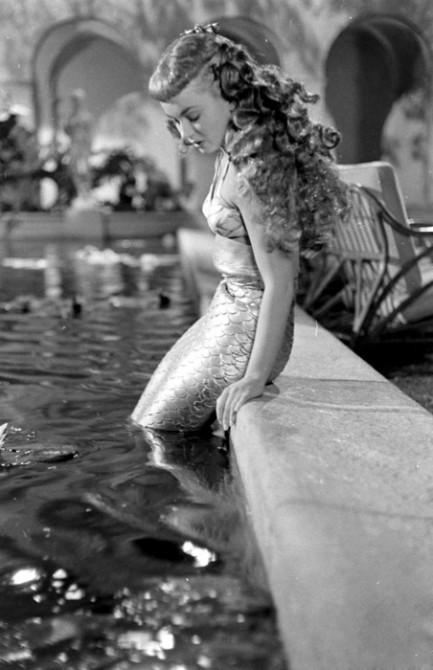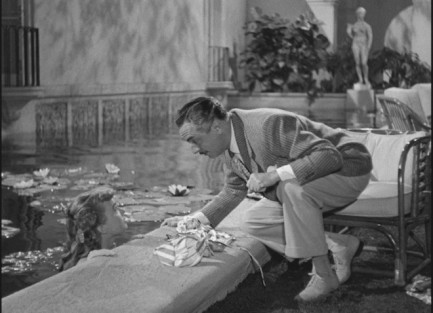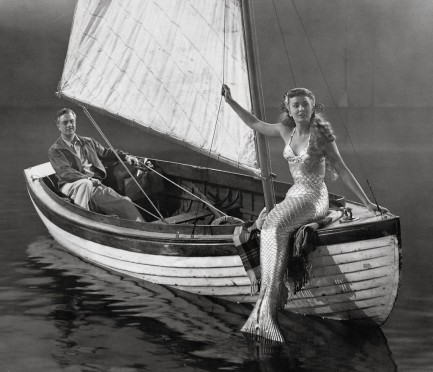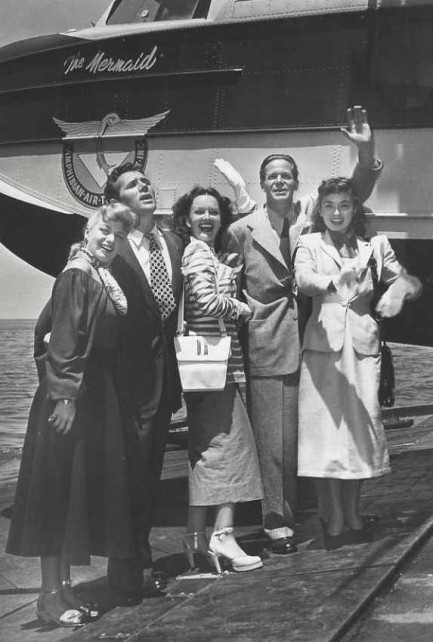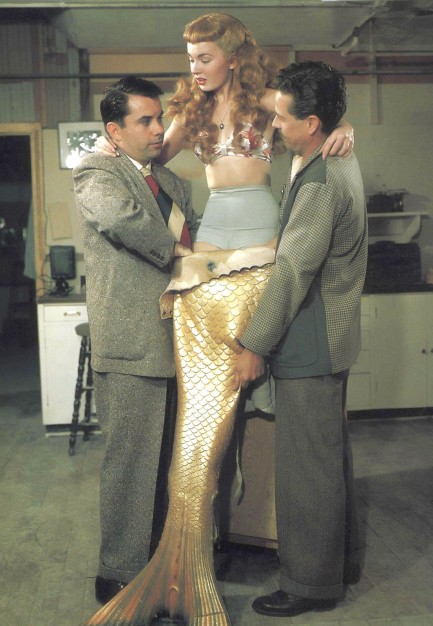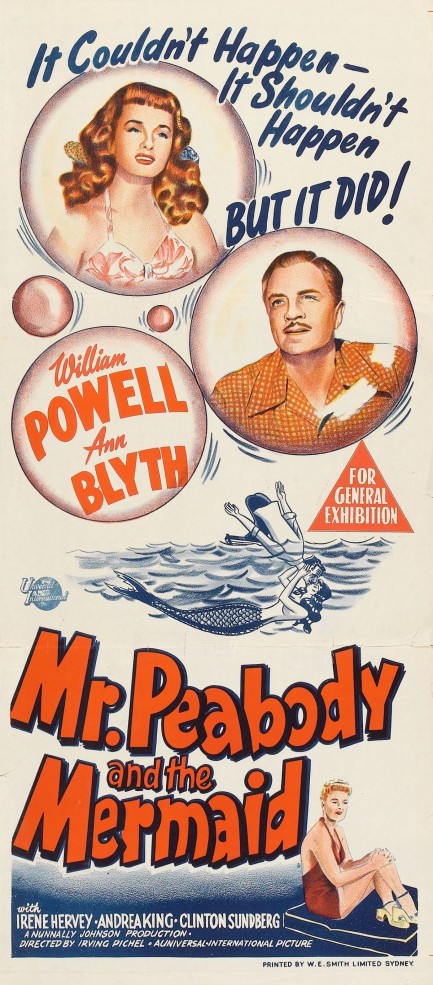| Hollywoodland | Aug 6 2023 |

Before we go any farther I need to tell you something—I'm loaded with mercury and microplastics.
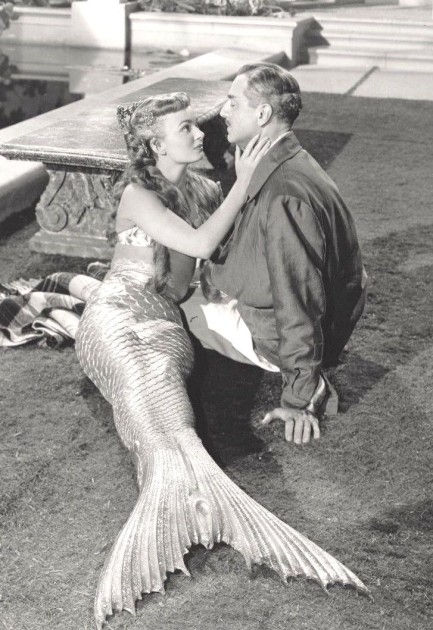
Above: Ann Blyth and William Powell in a production photo made while they were filming 1948's fish-out-of-water romance Mr. Peabody and the Mermaid. We wrote about it here.
| Vintage Pulp | Aug 11 2022 |

Even Powell and Loy's legendary act was bound to get tired eventually.
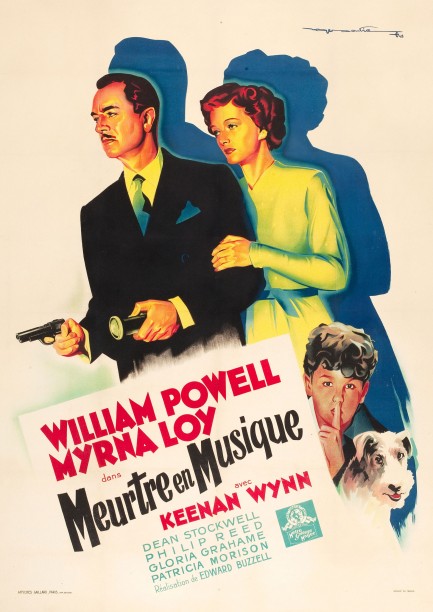
There's nice Roger Soubie art on this French poster for Song of the Thin Man, the last of six movies in the Thin Man series, which premiered in the U.S. in 1947 and reached France today in 1948. After six sessions the concept might seem a little worn to some viewers, but it still has William Powell and Myrna Loy as the leads. The mystery involves the death of an orchestra musician and the search for a missing bandleader, which leads to Powell and Loy exploring New York City's jazz underground. It's an all-white underground spread across various clubs, gambling boats, and parties, populated by at least fifty musicians, none of them of color. Of all the sight gags in the movie, the barring of black musicians from a film revolving around the art form they invented is the most notable one of all, but that's mid-century moviemaking for you.
The jazz gimmick is useful anyway, because it gives the filmmakers the opportunity to have Powell—as upper class supersleuth Nick Charles—play the role of a fish out of water. He understands neither the hipster jazzcats nor their customs and slang, and in about half a decade probably turns into the white-haired bartender from The Wild One. Even so, he needs to find and unmask a murderer in order to free a wrongly accused acquaintance from police custody. In true Thin Man fashion, he quips his way through the proceedings, plays cagey with femmes fatales Marie Windsor and Gloria Grahame, and finally unveils the killer in a nightclub populated by all the suspects. Loy is reliable as always in the sidekick role, and even amusingly picks up a few words of hep lingo.
While Dashiell Hammett originated the two characters of Nick and Nora Charles, he didn't touch Song of the Thin Man. Instead it was written by veteran crime novelist Steve Fisher and comedy writer Nat Perrin. Their union, unlike Nick and Nora's marriage, is an uneasy pairing, though it's hard to put a finger on what exactly is wrong. The mystery has an interesting backdrop, but is never compelling, while the humor seems clunkier than in the past. Powell and Loy do their best, but the movie failed to earn back its production budget, and the franchise came to an end. There were screenwriting and production issues, but we suspect that the real culprit was simple boredom—slayer of movie series and marriages alike. Audiences had simply moved on. World War, generational cynicism, and the emergence of grittier cinema will tend to cause that. Song of the Thin Man premiered today in 1947.
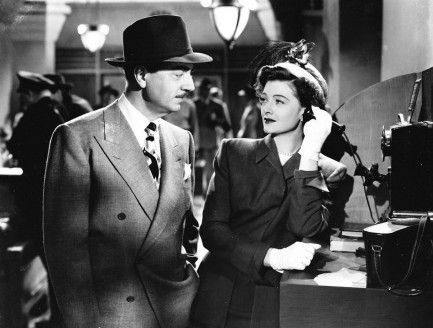
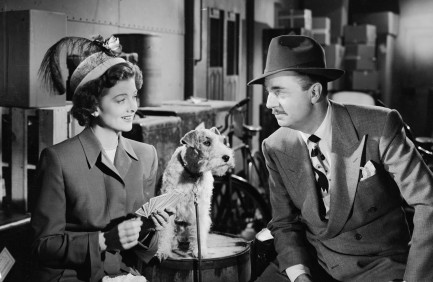
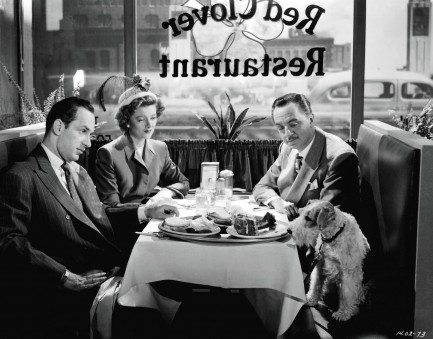
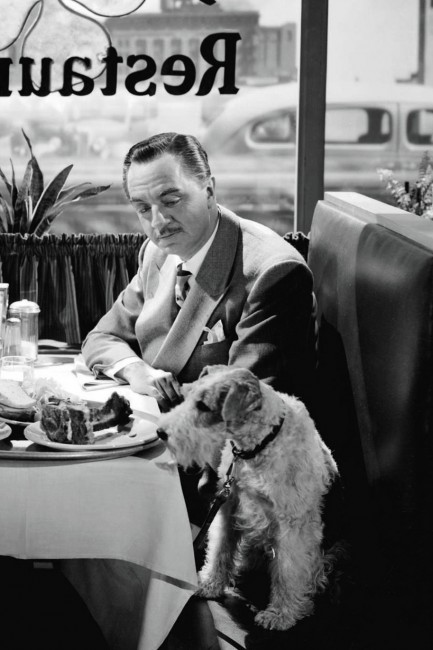
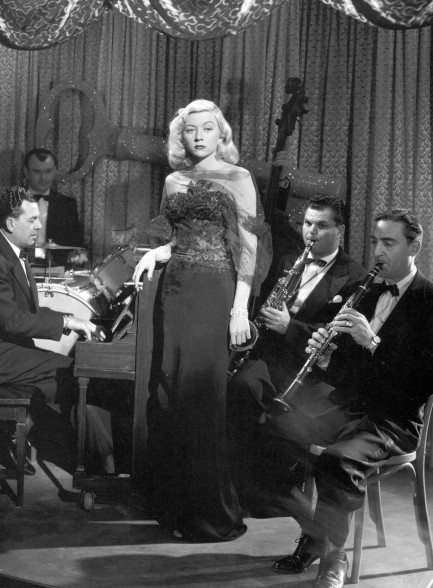
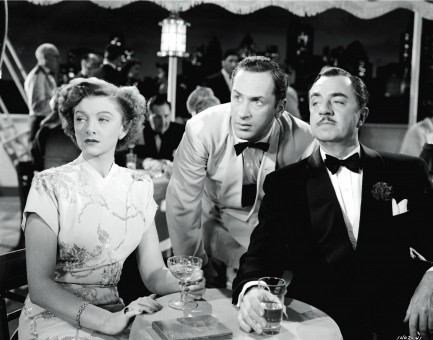
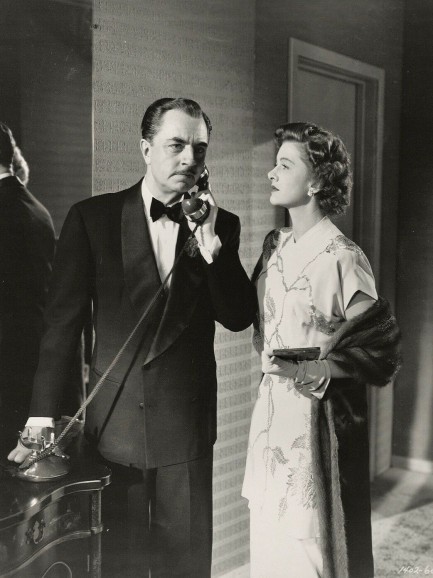
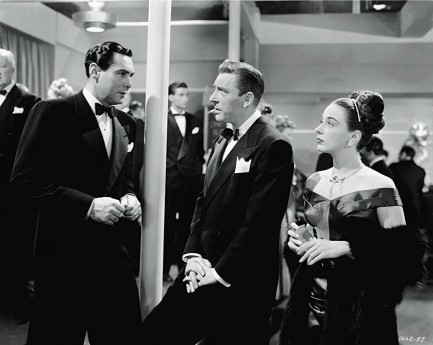
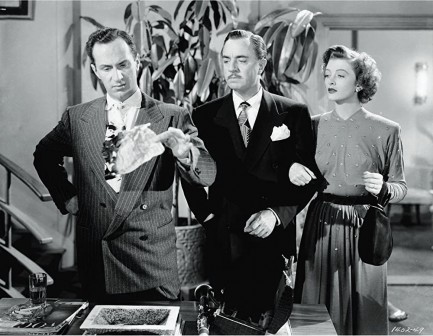
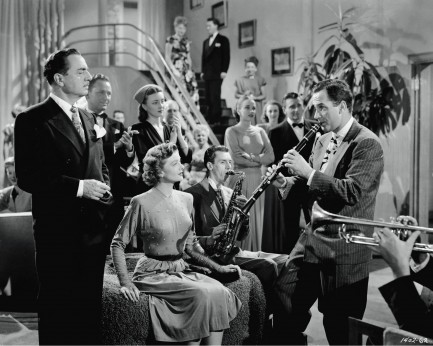
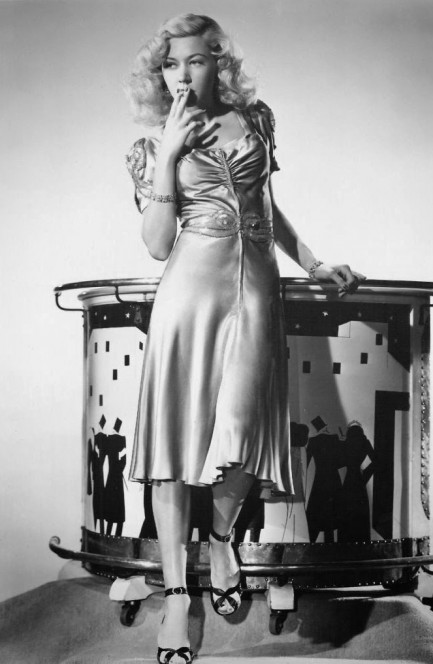
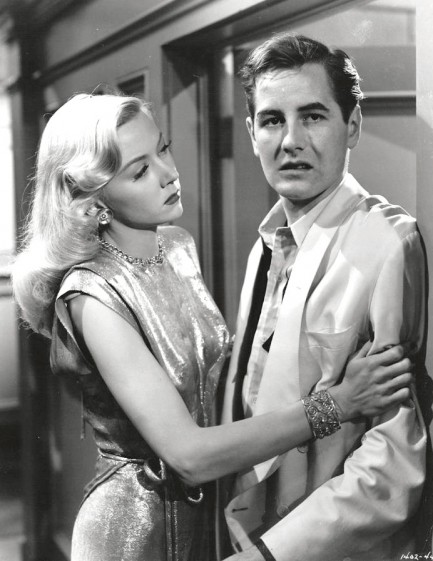
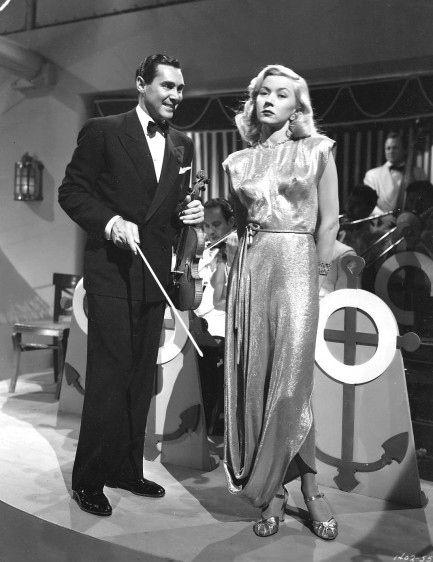
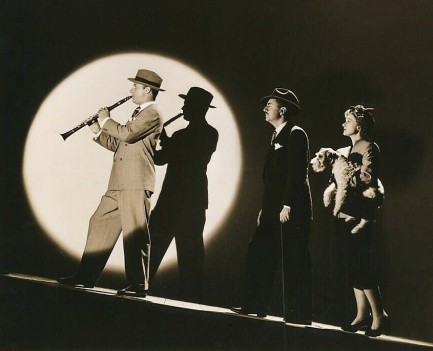
| Sex Files | Apr 3 2020 |

Powell and Loy take their relationship to the next level.

The lockdown has put us in a lewd mood. So to scratch that itch, today we have William Powell and Myrna Loy, famous for the series of Thin Man movies they made during the 1930s and ’40s, starring in an x-rated Tijuana bible. It's called Nuts to Will Hays, a reference to the Hays Code, the motion picture censorship regime that arrived on the Hollywood scene in 1930. In the comic Powell decides to become more than friends with Loy, explicitly planting his huge hairy organ into hers, to the enjoyment of both. We're glad we ran across this—it's a reminder to watch the entire series of Thin Man movies. We already watched the first, and nothing like this happened. We're probably safe in assuming nothing like this happens in any them, but we can dream. See more Tijuana bibles by clicking the keywords at the bottom of this post.
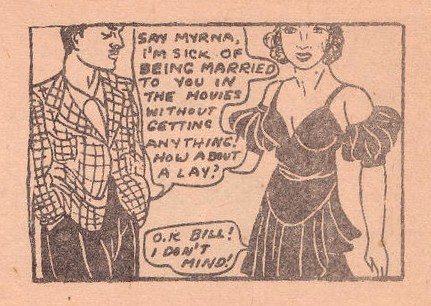
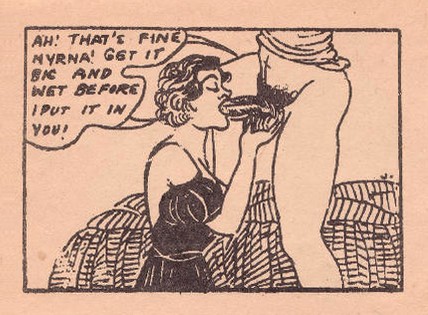
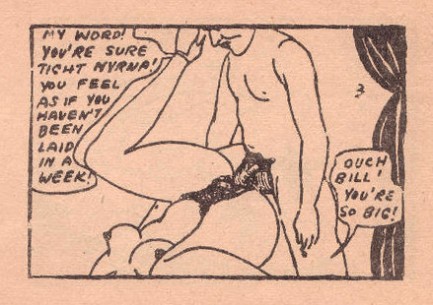
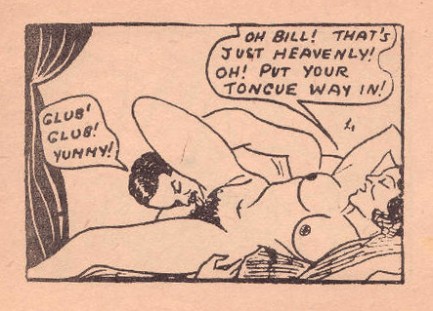
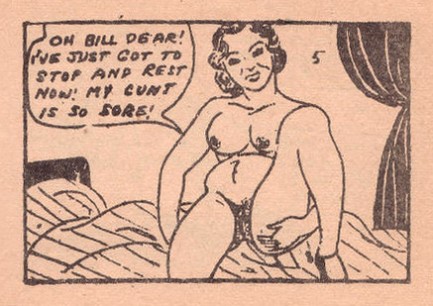
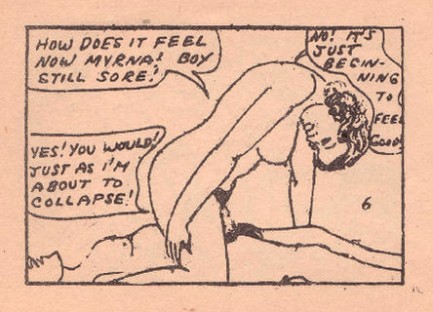
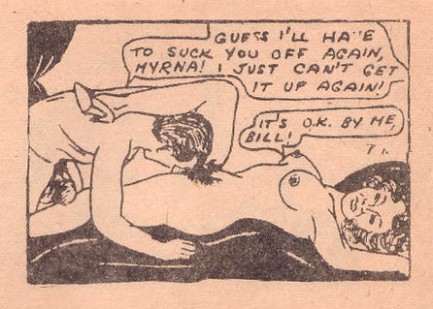
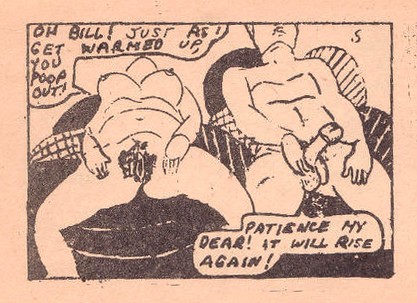
| Vintage Pulp | Mar 8 2020 |

Shadows of The Thin Man.
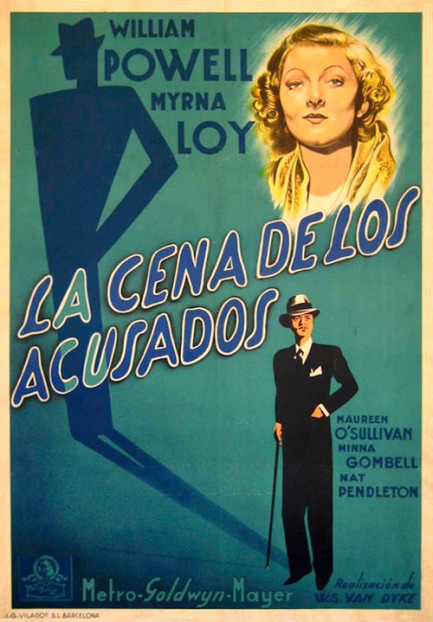
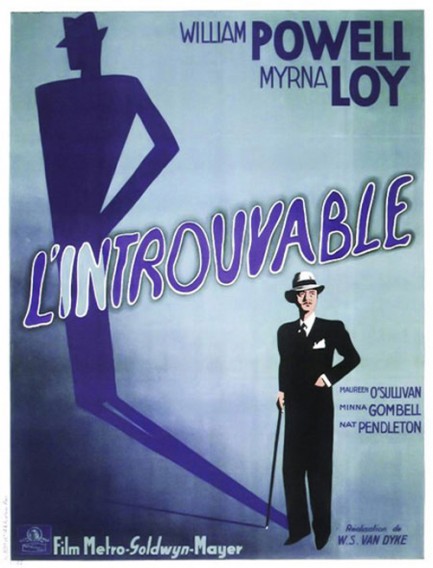
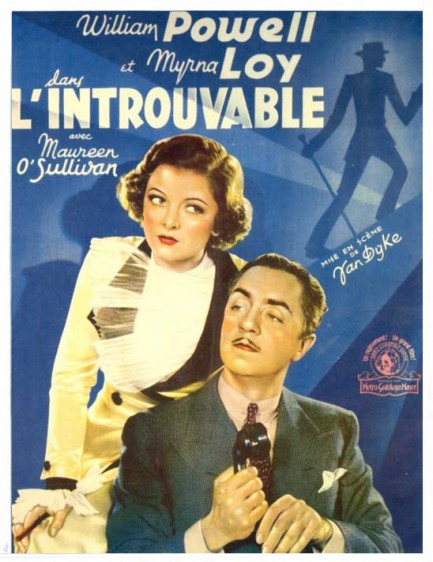
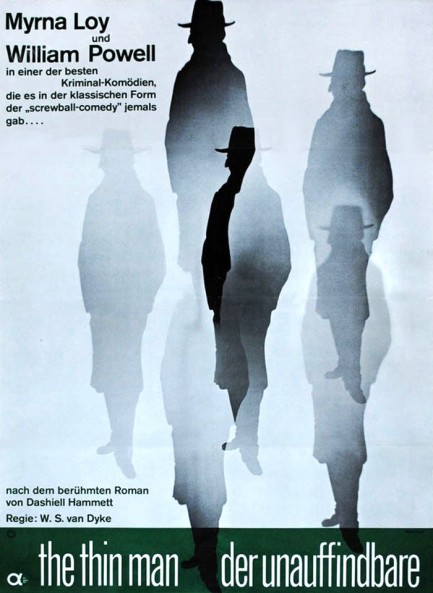
Above, Spanish, French, and German posters for 1934's The Thin Man, featuring interesting shadow motifs. Read about movie here, and the excellent book here.
| Vintage Pulp | Oct 16 2019 |

Cocktails, comedy, and crime make a mix that'll go right to your head.

Above, a fantastic Czech poster for the 1934 romantic comedy-murder mystery The Thin Man, which there was titled Detektiv Nick v New Yorku. This is a photo-illustration, rather than the paintings we love, but it's still, in our book, as good as promo art gets. As far as the film goes, like Casablanca or Chinatown, there's no way to overrate it. Some of the humor is so modern that you'll have trouble believing it was made almost a century ago and wasn't cribbed from an episode of Friends or Seinfeld. Just goes to show that in the infinity of time we don't change as quickly as we think.
We adore the boozing party animals at the center of this tour de force—Nick and Nora Charles, played by William Powell and Myrna Loy—whose drunken interactions could easily be the inspiration for Jim and Jules of the hilarious television show Brockmire. Credit the director, actors, editors, and everyone else for this masterpiece, but give the biggest nod to Dashiell Hammett, who wrote the excellent source novel. There's no release date for Detektiv Nick v New Yorku in Czechoslovakia, but figure spring or early summer of 1935.
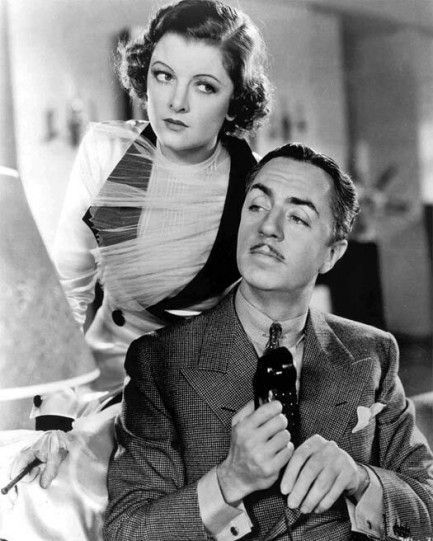
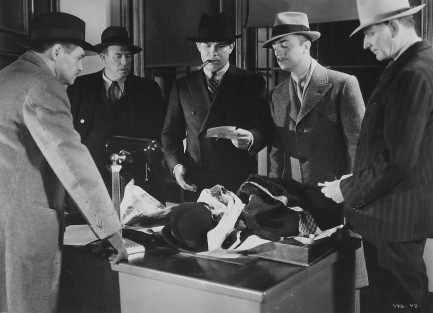
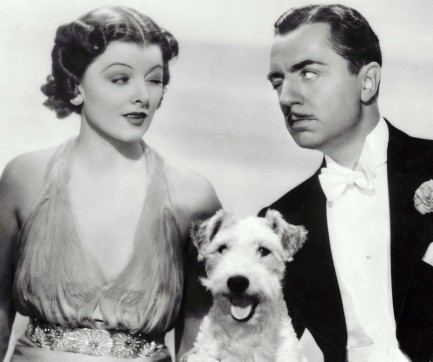
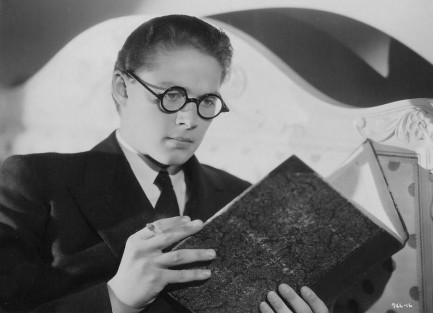
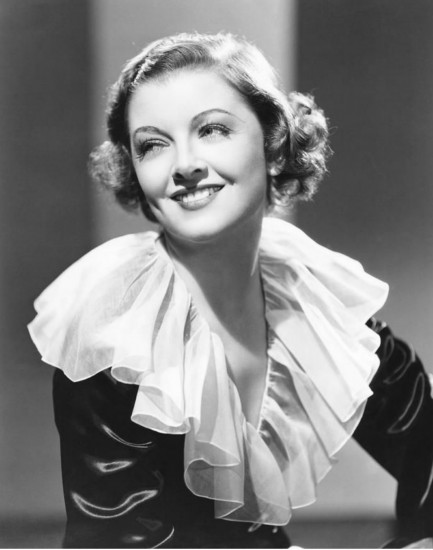
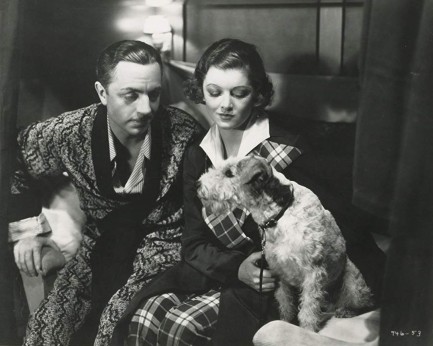
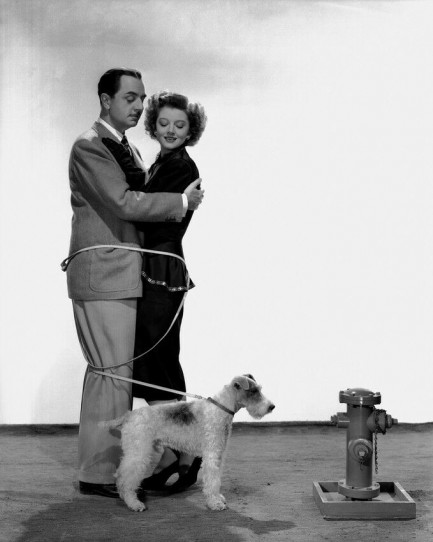
| Vintage Pulp | Mar 22 2019 |

Nick and Nora Charles—never shaken, never stirred, and almost never sober.
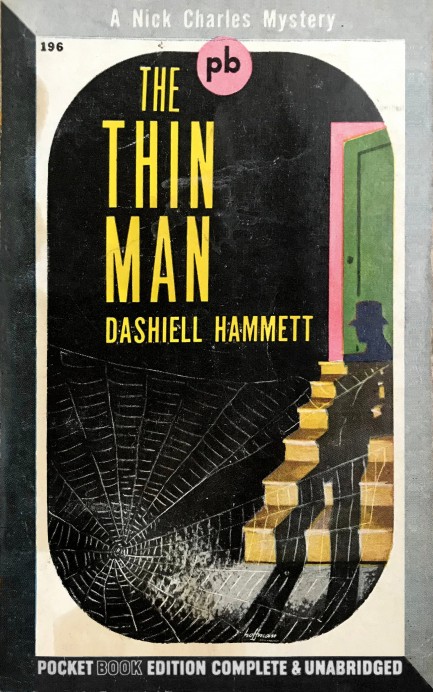
1934's The Thin Man is what we like to think of as a palate cleanser. After reading a few less accomplished authors you grab a Hammett because you know he's great. It's pure fun following functional alcoholic Nick Charles and his equally hard drinking young wife Nora as they navigate deception and murder. How much do Nick and Nora Charles drink? At one point Nick wakes up feeling terrible and realizes it's because he'd gone to bed sober. Several cocktail sessions a day is about average. Maybe that's why danger doesn't faze them. Even being shot at is reason for a libation and a quip.
This edition of The Thin Man is a rare one. It's the Pocket Books paperback from 1945, with the type of art that was prevalent on paperbacks during the heyday of pulp. We can't tell you much about the book that hasn't already been written, including the fact that it's less a mystery than a comedy of manners, but there is one aspect that's rarely commented upon. Nick Charles is of Greek descent. His full last name is Charalambides. This was the ’30s, when there was open racism in the U.S. against Greeks. James M. Cain delves into this in The Postman Always Rings Twice, in which the Greek character Nick Papadakis is insulted behind his back and set apart as a non-white inferior.
So in The Thin Man Hammett was portraying Nick Charles not as the upper crust dilettante William Powell made famous in the film version, but as a tough guy outsider. People are a bit afraid of him. Filmgoers were definitely not afraid of pencil mustached William Powell. Hammett wanted the written Charles to possess street cred, to be a person who had been places and seen things others had not. Hammett was going for a different type of detective in more ways than merely his drinking habits. Charles' maverick role is just a little extra flavor in an already entertaining novel. The actual mystery is difficult to follow, but even so we highly recommend this if you haven't read it.
So in The Thin Man Hammett was portraying Nick Charles not as the upper crust dilettante William Powell made famous in the film version, but as a tough guy outsider. People are a bit afraid of him. Filmgoers were definitely not afraid of pencil mustached William Powell. Hammett wanted the written Charles to possess street cred, to be a person who had been places and seen things others had not. Hammett was going for a different type of detective in more ways than merely his drinking habits. Charles' maverick role is just a little extra flavor in an already entertaining novel. The actual mystery is difficult to follow, but even so we highly recommend this if you haven't read it.
| Hollywoodland | Nov 18 2018 |

Everybody's a friend in Screenland.
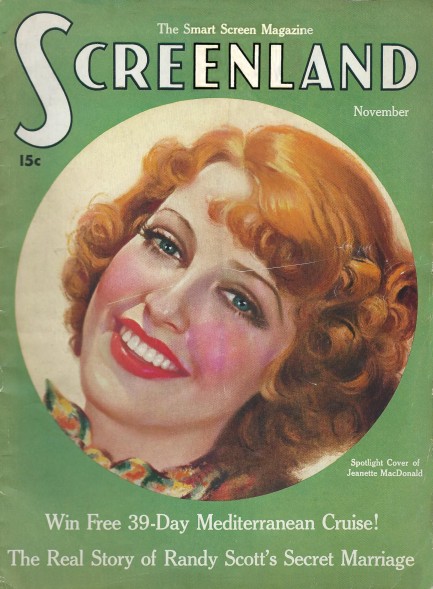
This issue of the celeb magazine Screenland hit newsstands this month in 1936 with a nice painting of Jeanette MacDonald adorning the cover. The art on that is by Marland Stone. Inside the magazine are Randolph Scott, Kay Francis, Gary Cooper, Jean Arthur, and numerous other stars. Among them are Arline Judge, who was in a boatload of movies during the ’30s, but later became more known for marrying and divorcing seven times, which is high even for Hollywood. Generally, the stars are referred to by Screenland editors only by their first names, which is a clever approach in a magazine that was designed to help fans connect with their favorite celebs. We have twenty-five scans below and a couple more issues of Screenland here and here.
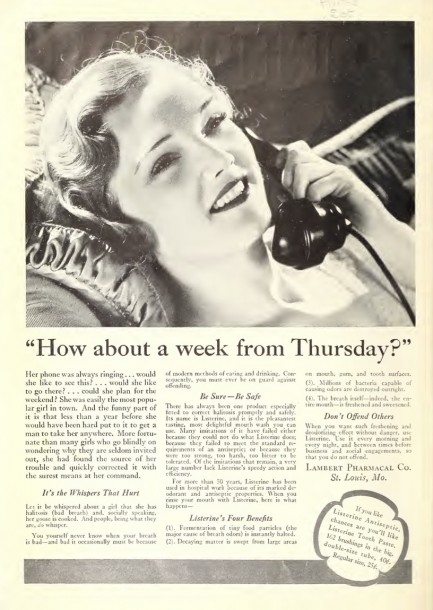
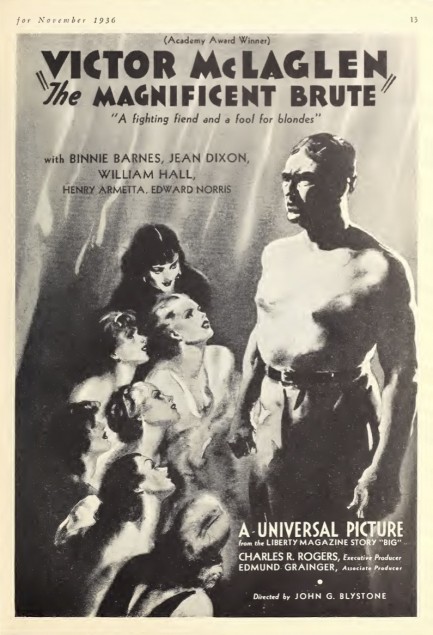
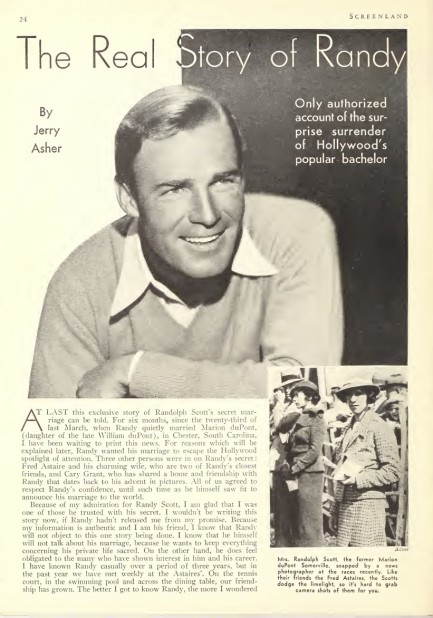
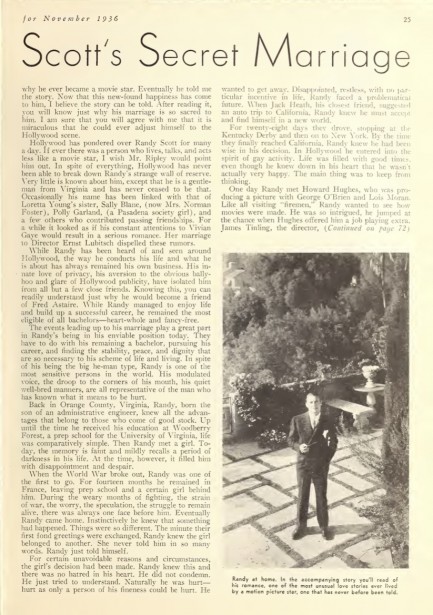
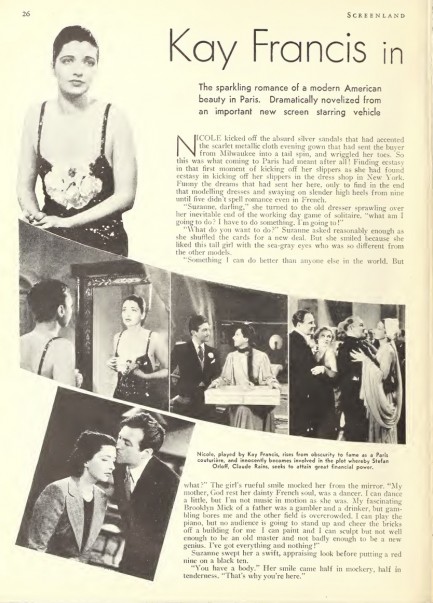
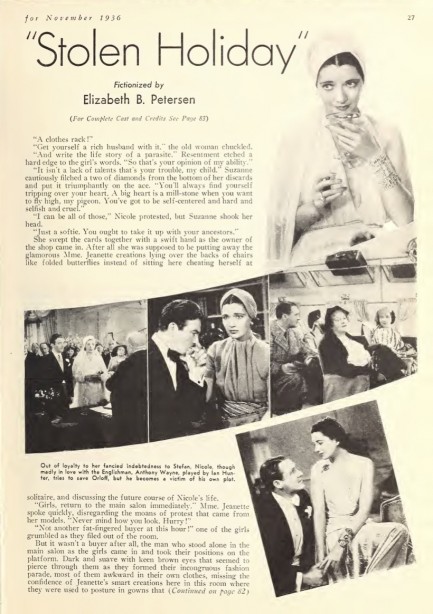
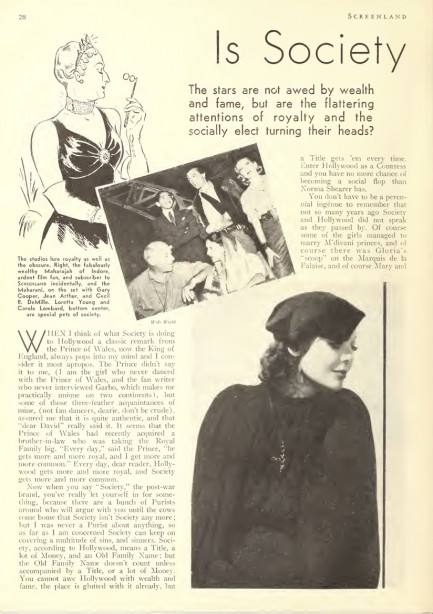
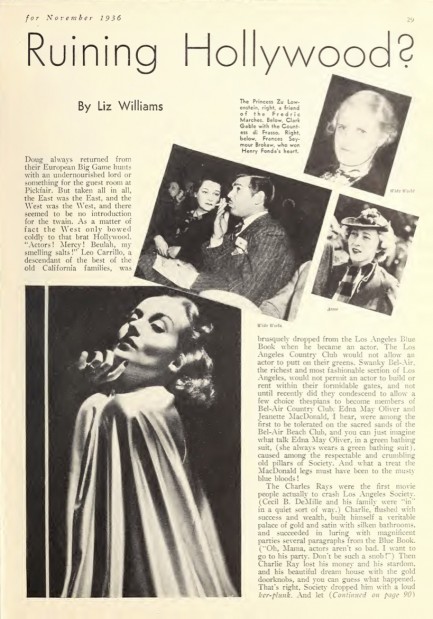
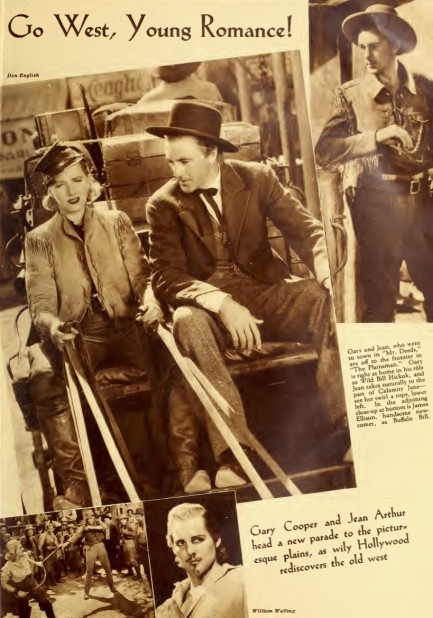
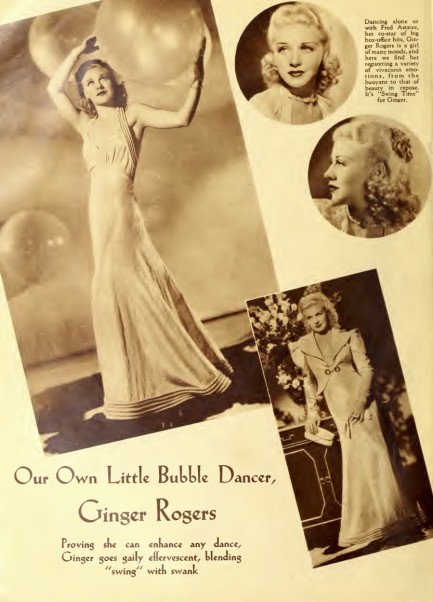
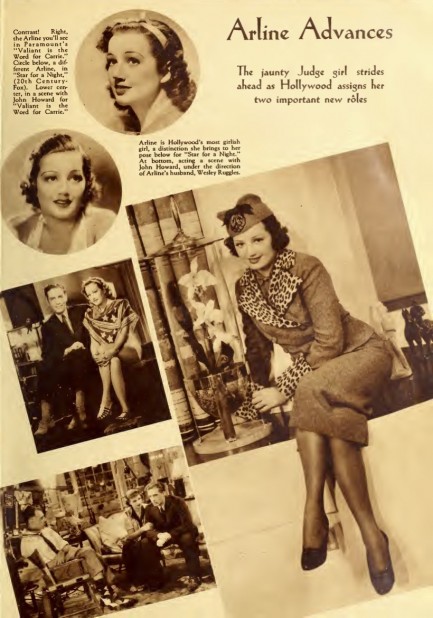

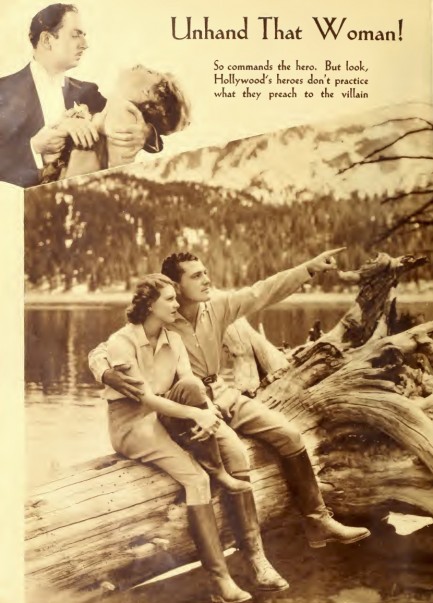
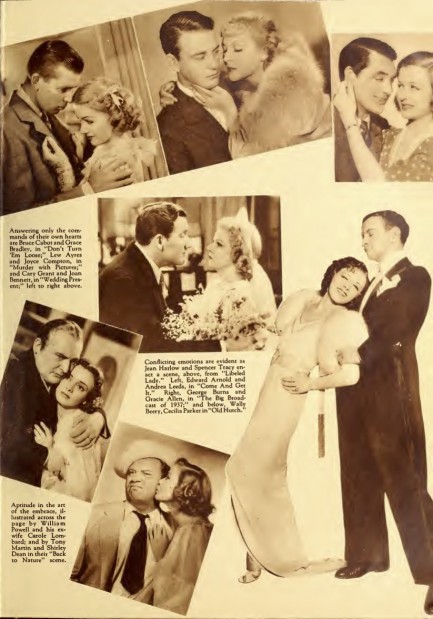
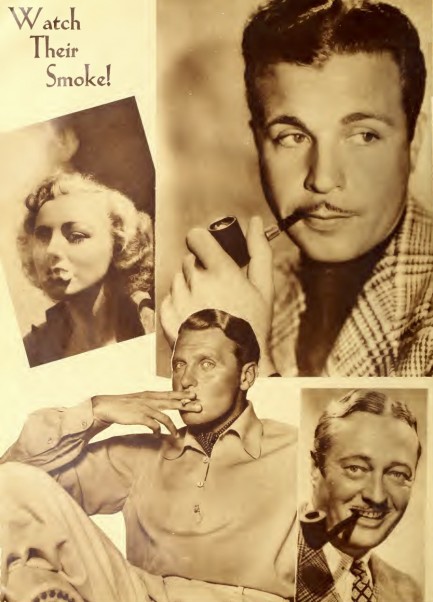
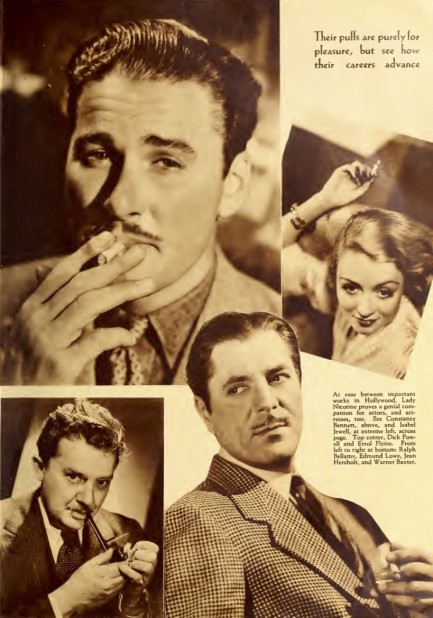
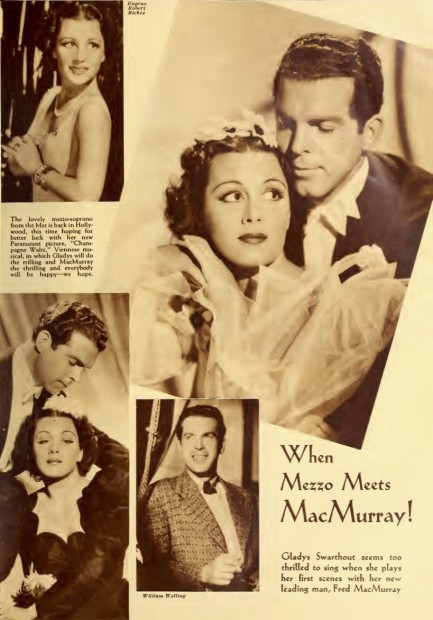
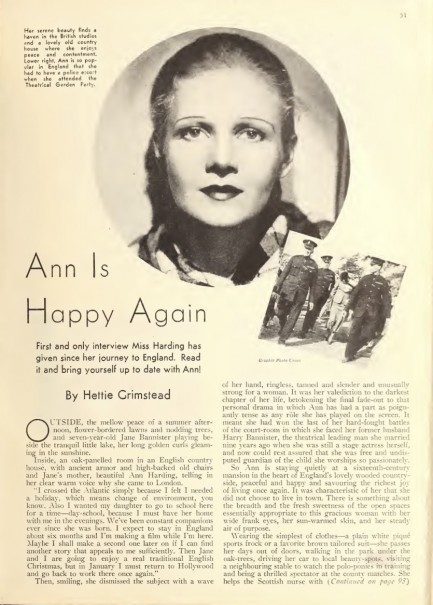

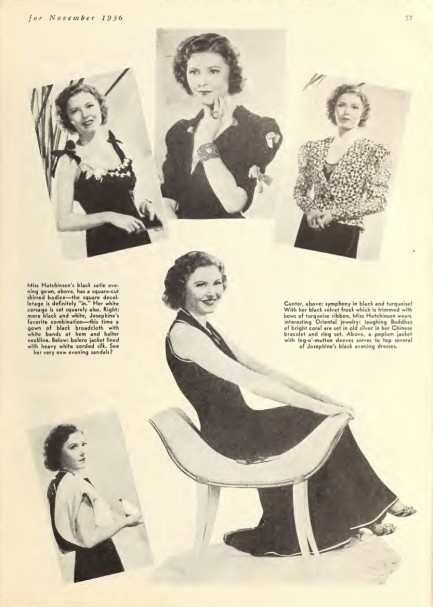
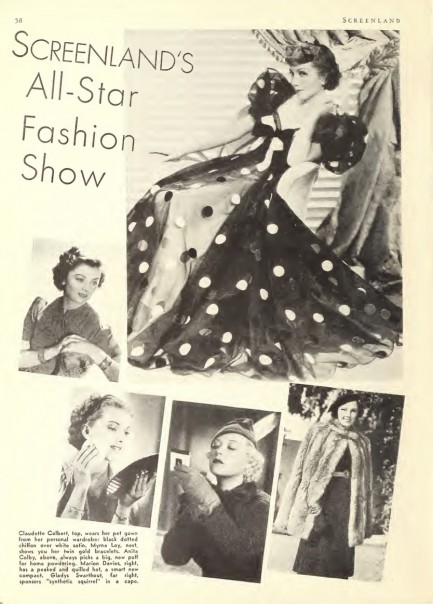
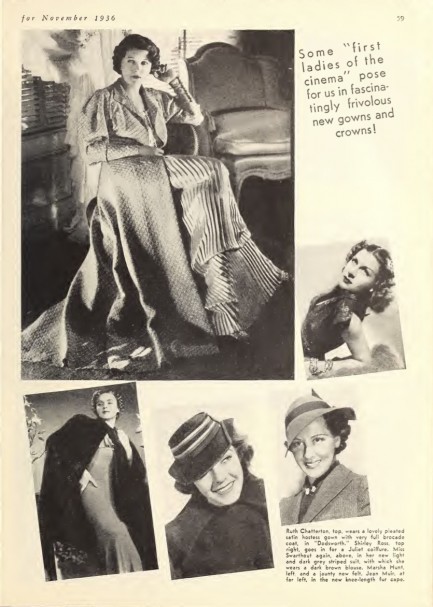
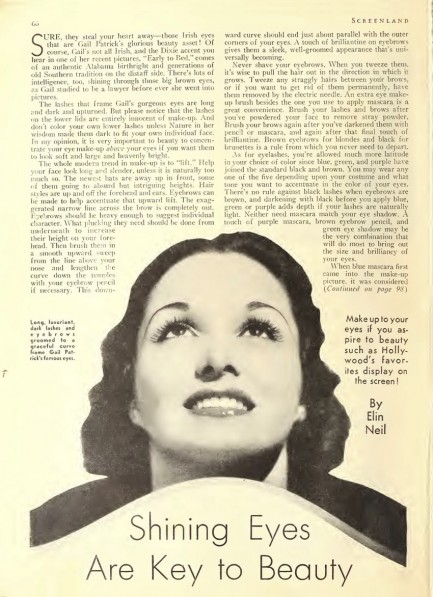
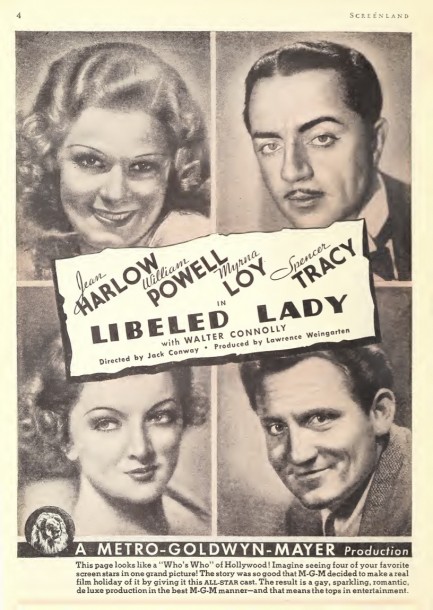
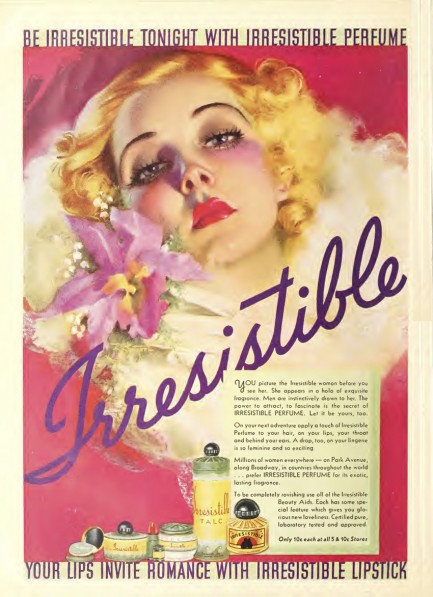
| Vintage Pulp | Aug 11 2017 |

William Powell discovers a rare species of marine life.
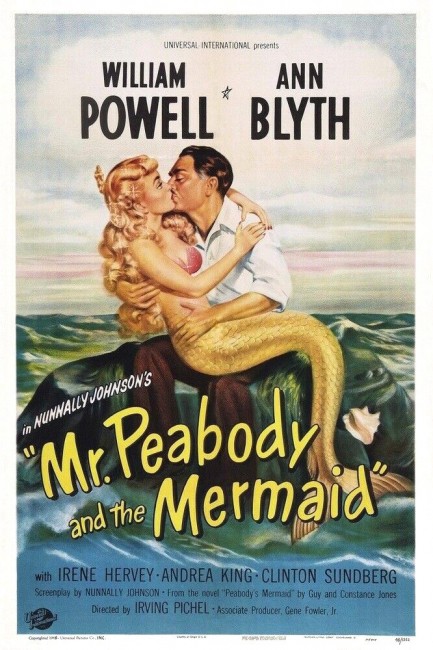
Today we're looking at a decidedly non-pulp movie—Mr. Peabody and the Mermaid, a featherweight comedy starring William Powell and Ann Blyth. We watched it because we featured Blyth as a femme fatale last year. She was wearing a mermaid costume in the photo we shared, and an image like that will make one curious. In the movie a fifty-year-old man having a bit of a two-thirds-life crisis takes a Caribbean trip with his wife, stumbles across a youthful mermaid, and falls in love with her. Powell is good, of course, as he is in everything, and Blyth is expressive—which is to say she doesn't speak. Why would she? She's a fish, silly. She does hiss, though. Irene Hervey as Powell's hot wife has a bit of a wandering eye herself, but for an actual man rather than a fantastical creature, and Andrea King plays a woman intent on making the moves on Powell. With all these potential infidelities there's lots of dramatic potential, but this is a family comedy, which means nothing too taxing to the average moviegoer occurs and everyone ends up where they belong—Powell and Hervey recommitted to their marriage, and Blyth recommitted to the sea. Cute stuff. Mr. Peabody and the Mermaid premiered in the U.S. today in 1948.
